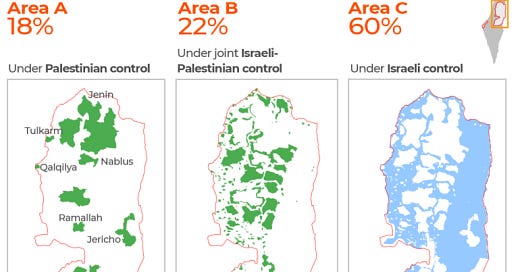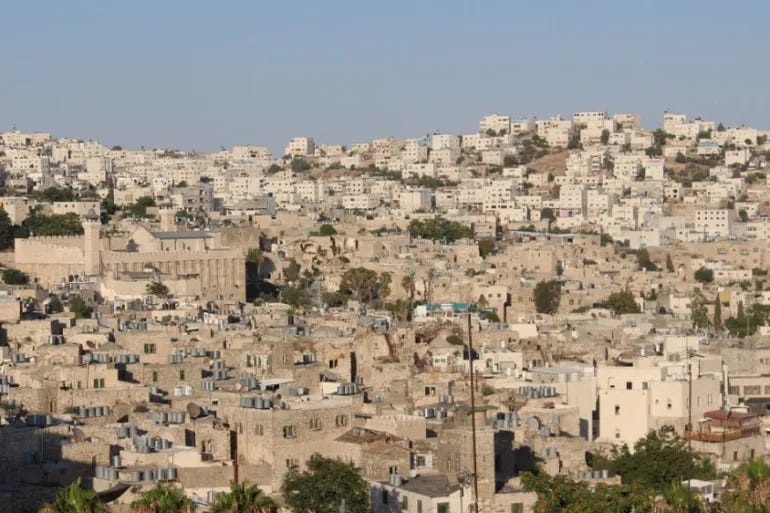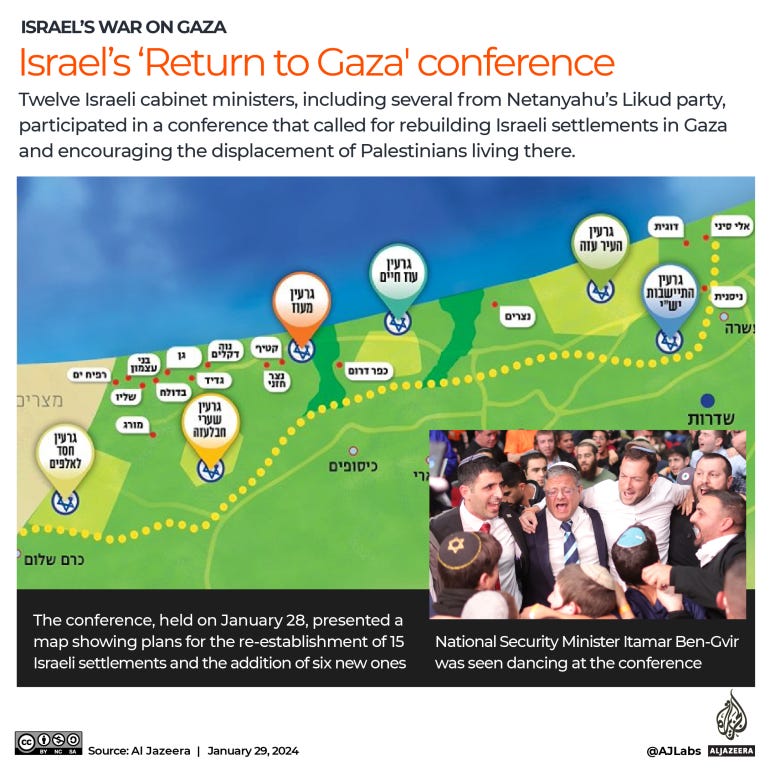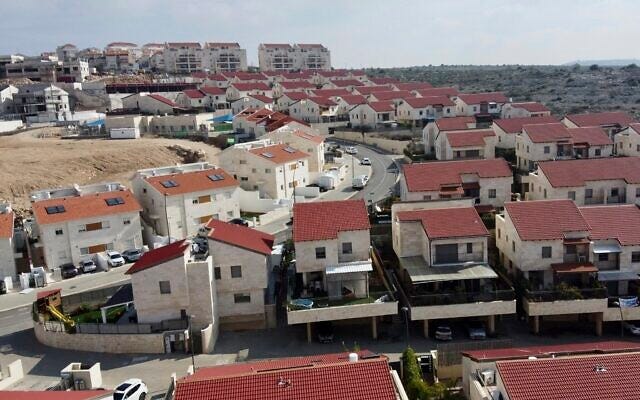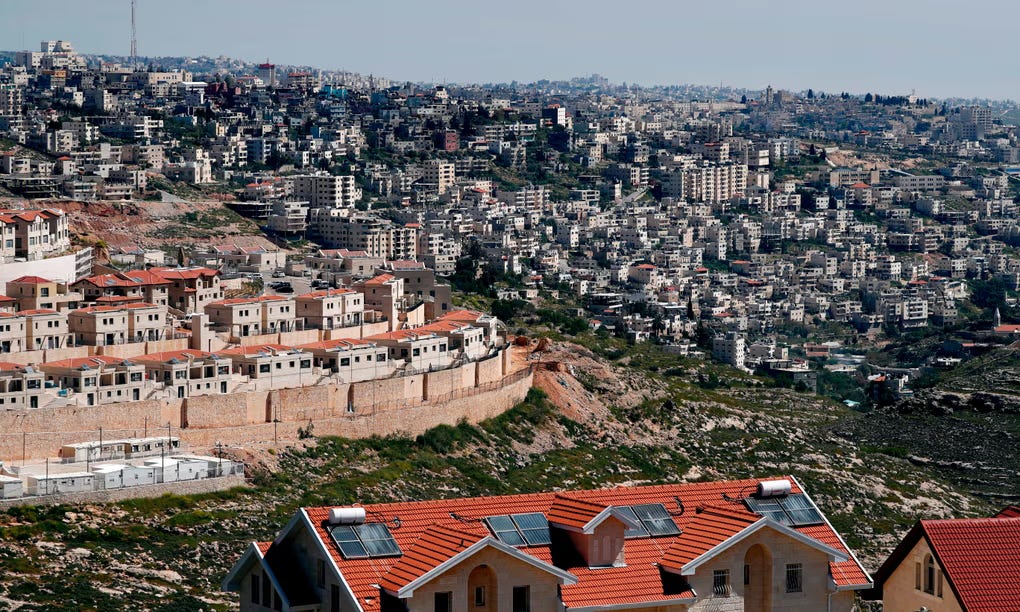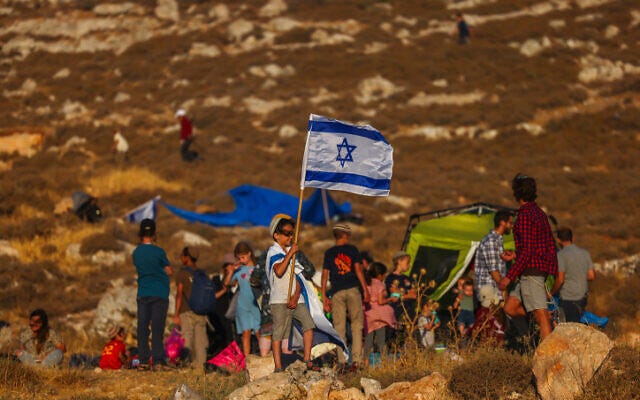Background: Settlers, Settlements, and Occupation, Part 1
The West Bank has been the site of extensive illegal settlement. Is Gaza next?
This article is the first in a two-part series dedicated to the phenomenon of Israeli settlements. It explains the illegal nature of the settlements and their basis in the appropriation of Palestinian land, how the Israeli state incentivizes settlers, and the role of settlements and their expansion in Israeli politics, including the current genocide in Gaza. Part 2 will examine the impact of the occupation and the apartheid regime it entails on the lives of Palestinians living in the West Bank.
In 2019, an Israeli settler living in Hebron candidly told the New York Times:
“I admit, I never thought about how my Arab neighbor feels. I don’t think it’s from carelessness. For me, when it’s a situation of animosity between two groups, then her feelings are irrelevant. Our existence depends on this country. Yes, I can admit that there is something fascist about me. I’m not hiding it. I don’t believe there’s any other way.”
(The New York Times noted surprise at the “lack of political correctness”)
The illegal occupation of the West Bank is one of Israel’s most flagrant violations of Palestinian rights, and one of the major obstacles to peace. Settlement expansion has long been a right-wing Israeli project, and since Oct. 7, incidents of settler terror in the West Bank have skyrocketed. With Israeli ministers attending a conference dedicated to encouraging the resettlement of the Gaza Strip, the occupation appears poised to expand — this time over the ruins of Palestinian cities and graves.
What are the settlements?
The Israeli settlements are cities, towns, and villages that have been established in the occupied areas of the West Bank and East Jerusalem. In 2022, there were about 700,000 Israelis living in settlements in the West Bank, including 229,000 in East Jerusalem. This is a marked increase from just ten years ago, when the settler population was at 520,000.
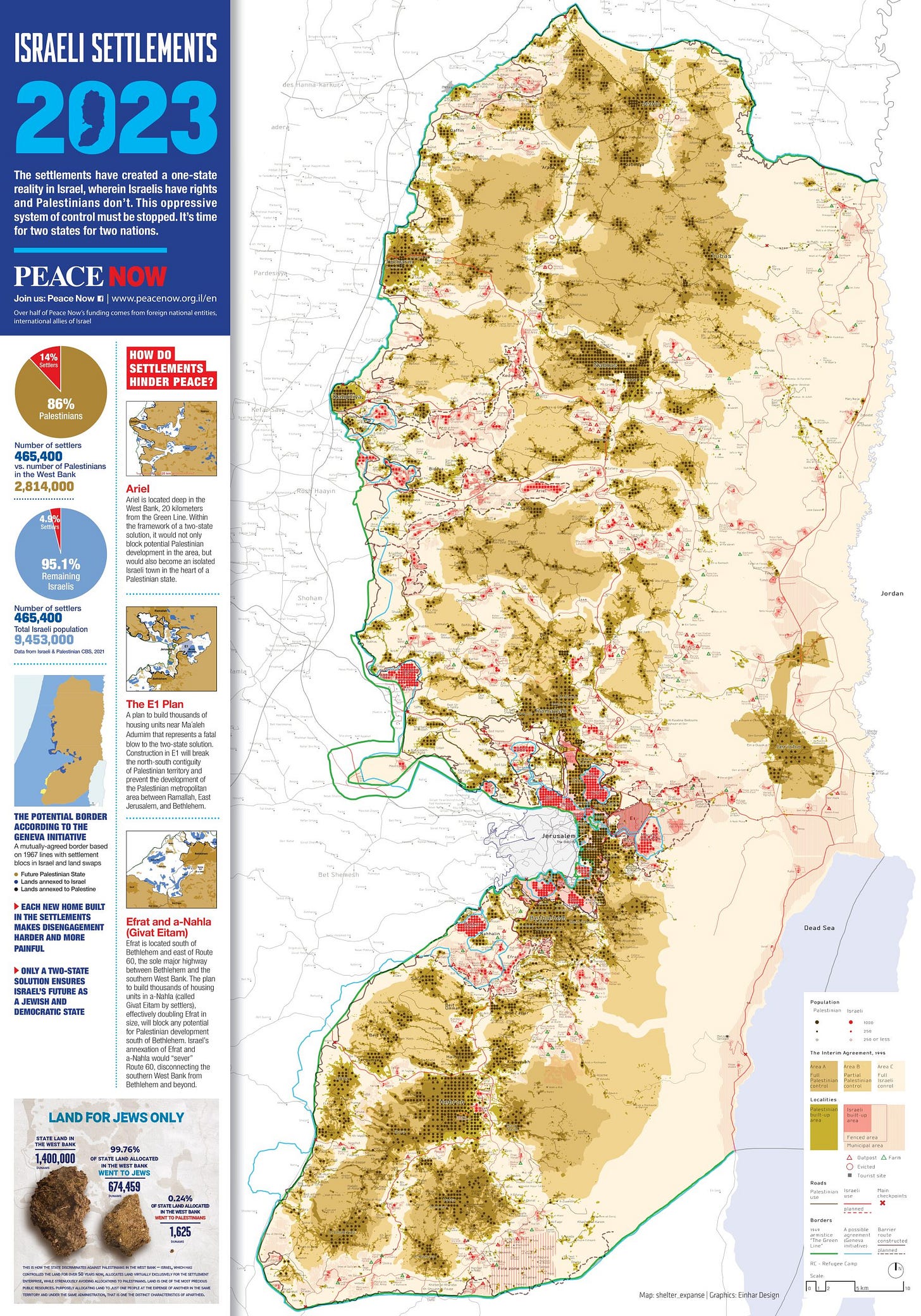
There are two general types of settlements: official settlements and illegal outposts. The former have the legal recognition of the Israeli government, and their residents are treated similarly to Jewish citizens within Israel itself. There are 146 of them in the West Bank and 14 in East Jerusalem. Illegal outposts are settlements constructed without approval from the Israeli government, and there are 144 in the West Bank.
In recent years, the settlements have grown rapidly in recent years in terms of population.

Are the settlements legal? Where does the land come from?
Although Israel’s domestic policy designates some settlements as legal and others as illegal, both types violate international law, which does not allow occupying countries to move their citizens into occupied territory. In other words, the settlements are built on private land stolen from Palestinians.
The 1995 Oslo Accords divided the West Bank into areas A, B, and C. Under that agreement, control of the entire West Bank was supposed to be transferred to the Palestinian Authority. This has not happened. Additionally, Area C cuts Areas A and B into non-contiguous segments, making it difficult for Palestinians to travel between towns.
While all settlements are built on land that legally belongs to Palestinians, some are built directly on the ruins of destroyed Palestinian villages or agricultural land seized by the Israeli state. In all, more than two million dunams (about 772 square miles) of land have been taken from Palestinians and used as sites for settlements and outposts (pg. 6).

For example, 1,411 dunams were seized from the Palestinian village of Nahalin to establish neighboring Israeli settlements. This constituted 11.6% of the village’s area. Additionally, a settlement called Geva’ot was built within the borders of the village.
What are the settlements like?
They vary greatly in terms of size, ranging from cities to towns to villages. The four largest in the West Bank, Ariel, Beitar Illit, Ma’ale Adumim, and Modi’in Illit have a combined population of 200,000 and are considered cities. Below that are towns with between 2,000 and 20,000 residents organized under local councils, then villages that are represented in clusters under regional councils.

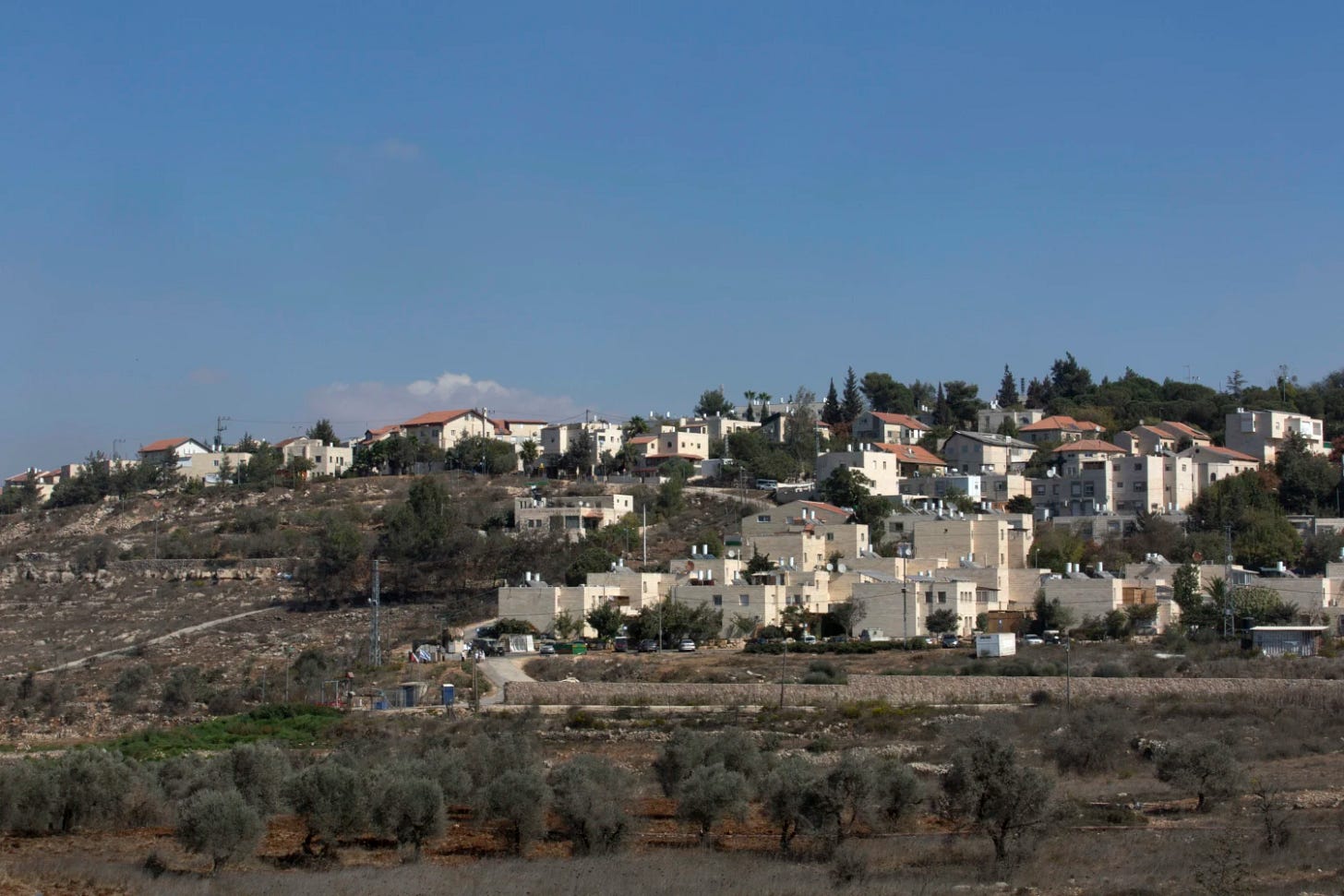
How does the Israeli government incentivize settlers?
For Israelis, life in the settlements is economically beneficial: housing costs are much lower than within the borders of Israel. In Tel Aviv, for example, the average price of an apartment was $603,000 USD in 2013, and in Jerusalem, it was $433,000. In the West Bank, similar apartments could be purchased for an average of $280,000 in Ariel, $262,000 in Beitar Illit, $323,000 in Maale Adimum, and $261,000 in Moodin Illit.
Because many settlements are within easy driving distance to cities within Israel, including Jerusalem, this makes them attractive places to live for commuters. While the settlements have made strides towards economic autonomy, establishing industrial parks and institutions of higher learning such as Ariel University, they are still largely dependent on Israel proper.
The Israeli government also provides substantial economic subsidies to settlers. In a 2021 report, B’Tselem estimated that “on average, the settler population enjoys a higher standard of living than the overall population of Israel,” (pg. 10). Employment, home ownership, and standardized test scores compare favorably to the rest of Israel. Incentives provided to the settlers include:
Subsidized mortgages with low interest rates (4.5% over 20 years)
Up to NIS 160,000 ($44,063 USD) per family for development costs of new buildings in the settlements
Steep discounts of between 21% and 41% on land to be used for residential purposes
New farmers in the settlements can receive up to NIS 1,000,000 ($275,394) in start-up funding
Increased wages of up to 70% for school personnel, including teachers and principals
Residents of 30 settlements are eligible for income tax reductions of 7-12%
Subsidies for social services
Grants to local councils
“I’m living the American Dream in Israel. We’re in the suburbs and it feels like a bedroom community. Like Westchester [a suburb of NYC] we have a big house— much bigger than we would have anywhere else in the country. We have a lot of land, a big backyard, and there's people that speak English all over.” — An American settler living in Karnei Shomron
The relative affordability created by these incentives has made the West Bank settlements a popular destination for American Jews making aliyah — moving to Israel. Although Americans comprise just 1% of residents within Israel, they comprise 15% of the population of the settlements. It’s estimated that 60,000 Americans live in the West Bank.
What is the current government of Israel’s approach towards the settlements?
Expansion of the settlements is a plank on the platform of several political parties in Israel. At the beginning of 2023, they formed a coalition in the Knesset, Israel’s legislature. One of the coalition’s priorities reads as follows:
“The Jewish people have an exclusive and inalienable right to all parts of the Land of Israel. The government will promote and develop the settlement of all parts of the Land of Israel — in the Galilee, the Negev, the Golan and Judea and Samaria [the West Bank].”
An analysis of the coalition agreement by civil rights advocacy groups working within Israel suggests that the likely effect of the 37th government’s policies include the annexation of the West Bank to Israel, even greater promotion of settlement, increases in settler violence, and further restriction of Palestinian self-determination.
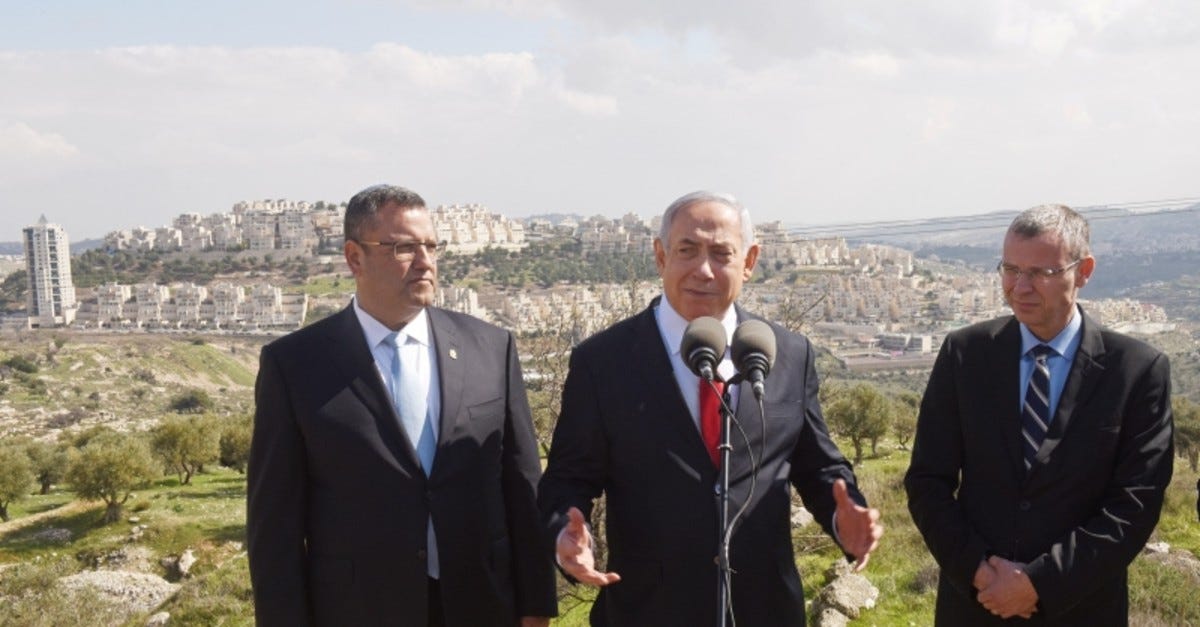
True to its promise, in February 2023, the 37th government effectively annexed the West Bank by placing it under civilian rather than military control. This arrangement makes the Israeli minister of defense the de facto governor of the West Bank. Like the occupation itself, this is a violation of international law.
In June, it passed a resolution giving finance minister Bezalel Smotrich the ability to authorize new settlements, significantly reducing the lengthy process of authorization required previously. Smotrich, himself a settler, gloated that
“The construction boom in Judea and Samaria and in all parts of our country continues. As we promised, today we are advancing the construction of thousands more new units in Judea and Samaria [the West Bank]… We will continue to develop the settlements and strengthen Israel’s hold on the territory.”
Extremist settler organizations within Israel are another powerful constituency advocating for the expansion of the occupation. Some even take the matter into their own hands: in 2021, the Nachala Settlement Movement publicly organized the establishment of three new illegal outposts in the West Bank. The movement’s explicit goal is to “stop Arabs from taking this land.” Daniella Weiss, one of Nachala’s leaders, stated in a 2023 interview that
The world, especially the United States, thinks there is an option for a Palestinian state, and, if we continue to build communities, then we block the option for a Palestinian state. We want to close the option for a Palestinian state, and the world wants to leave the option open. It’s a very simple thing to understand.
Herein lies the end goal of the occupation of the West Bank: preventing Palestinian self-determination. Part 2 will examine the ways in which the occupation systematically violates the rights of Palestinians living in the West Bank, subjecting them to what is effectively an apartheid regime.
Learn More
Read:
This is Ours - And This, Too: Israel’s Settlement Policy in the West Bank
State Business: Israel’s Misappropriation of Land in the West Bank Through Settler Violence

